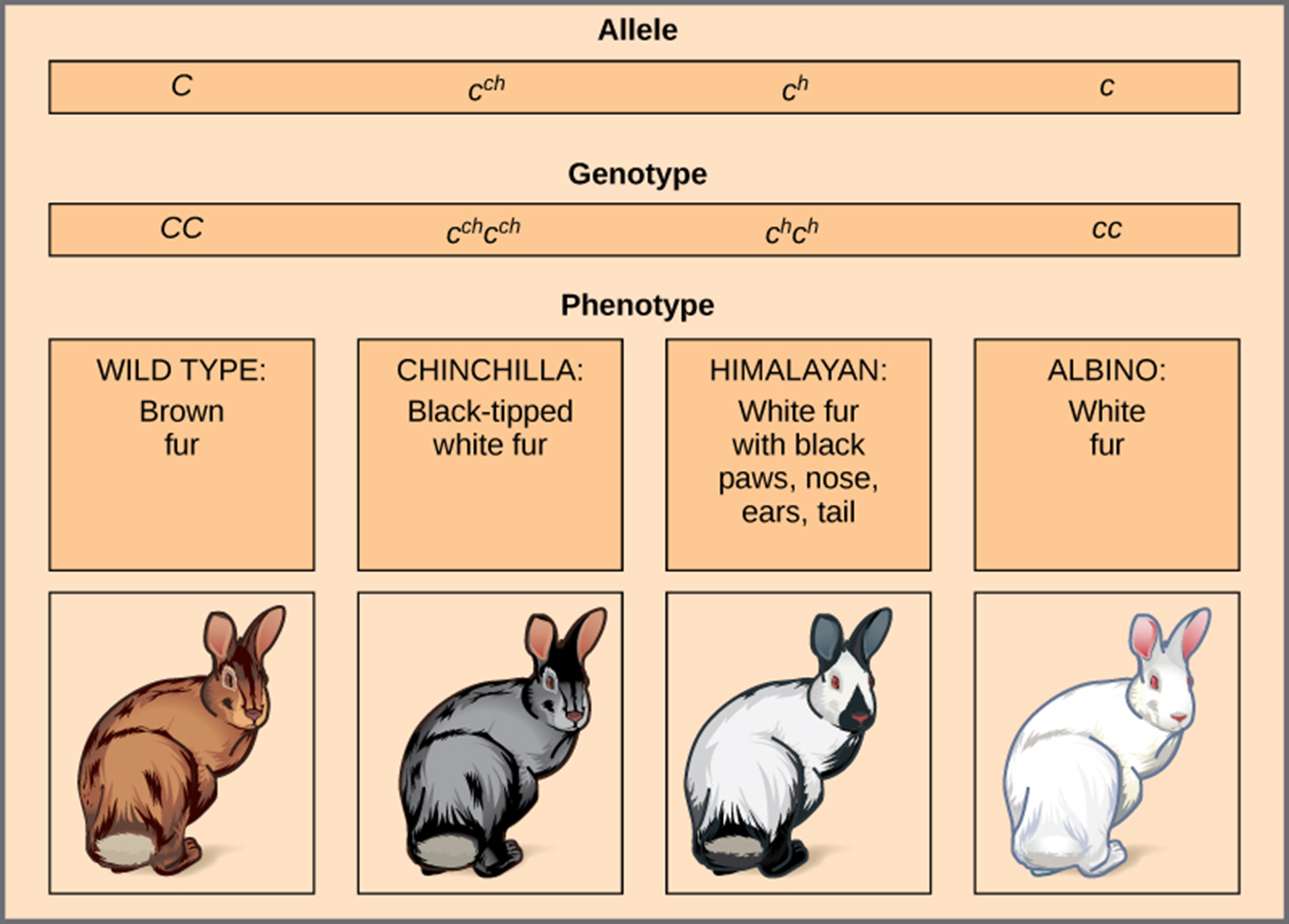Inheritance test human biology
1/27
There's no tags or description
Looks like no tags are added yet.
Name | Mastery | Learn | Test | Matching | Spaced |
|---|
No study sessions yet.
28 Terms
What are genes?
Small sections of DNA in our chromosomes that code for specific traits (code for a specific protein) which then determine the structure and function of cells (e.g the amount of melanin produced determines eye/skin and hair colour).
What is a loci?
Area on the chromosome where the gene is.
What are alleles?
The different copies/versions of the genes. Some alleles are dominant over the others which are called recessive. Dominant alleles are given a capital letter, recessive alleles are given the lower case letter.
What is a genotype?
The combination of alleles you received from your parents. Represented by letters. (e.g. BB, Bb or bb)
What is a phenotype?
The PHYSICAL appearance of an individual based on their genotype. (e.g. BB (genotype) Brown eyes (phenotype))
What is homozygous?
you have two copies of the same allele (can be the dominant or recessive allele). (e.g. BB or bb)
What is heterozygous?
you have one copy of each allele. (e.g. Bb)
What is a cross?
mating of two organisms.
What is a monohybrid cross?
one pair of contrasting characteristics is studied.
What is complete dominance?
Complete dominance inheritance of an allele involves one allele being dominant over another recessive allele. The dominant allele masks the effect of the recessive gene from being expressed in the phenotype.
What is incomplete dominance?
neither allele is dominant over the other. Heterozygous individuals would show a blending of the two phenotypes.
What is co-dominance?
neither trait is dominant over the other. Heterozygotes will have both phenotypes expressed. Are not blended.
What is multi-allelic inheritance?
Not all traits are controlled by simply two alleles. Some traits have more than two alleles that can dictate the phenotype.

What are sex-linked (x-linked) traits?
Characteristics that show different patterns in the two sexes. Traits are located on the X chromosome.
What is red-green colour blindness?
The ability to discriminate between the colours red and green is controlled by a gene located in the X chromosome. Individuals who are unable to distinguish between these two colours possess the recessive allele of this gene.
As the gene is located on the X chromosome, it is more frequently found in males than in females
What are carriers?
people who carry a recessive allele, but to not show the recessive phenotype. (only females can be carriers of a x-linked condition)
What is hemizygous?
refers to males who have the recessive trait as there is no allelic counterpart for males with sex-linked traits.
What are some other x-linked disorders?
-Diabetes insipidus
-Duchenne muscular dystrophy
-Haemophilia
What is diabetes insipidus?
Where kidneys unable to concentrate urine which passes very large quantities of urine. Gradually becoming dehydrated.
What is Duchenne muscular dystrophy?
Progressive wasting disease of the voluntary muscles (chest, shoulders, arms, legs) which becomes apparent around 3-5 years old. As years pass, more muscle tissue waste away and is replaced by fatty substances.
What is Haemophillia?
Blood clots slowly or not at all where the recessive gene carried on X chromosome. Usually mothers will pass defective gene to sons.
How can you identify an Autosomal recessive disease with pedigrees?
Two unaffected parents have an affected offspring. Therefore they both must be heterozygous and carry the recessive allele. (Generations may skip)
How can you identify an Autosomal dominant disease with pedigrees?
Two affected parents have an unaffected offspring. Therefore they both must be heterozygous and carry the recessive allele.(Generations don’t skip)
How can you identify an X-linked recessive disease with pedigrees?
Can only prove that a pedigree is not showing X-linked. But if X-linked recessive – all sons of an affected mother must be affected.
How can you identify an X-linked dominant disease with pedigrees?
Can only prove that a pedigree is not showing X-linked. But if X-linked dominant – all daughters of an affected father must be affected.
What is DNA profiling?
A technique that allows an individual’s genes to be visualised. This allows someone's genetic makeup to be compared to known genes to see if they too have them.
This technique can be used to identify genetic disorders in individuals or match DNA samples to individuals. Usually, sample regions of DNA called introns, once called Junk DNA, are used since it varies between individuals (but not twins). These repetitive regions of ‘Junk DNA’ are now called STRs: Short Tandem Repeats.
How is DNA profiled?
Enzymes are used to cut out the specific piece of DNA we want to compare. DNA fragments then undergo electrophoresis to separate the pieces of DNA by size. Shorter STR segments will travel further than longer ones
What are the ethical considerations of DNA profiling?
-Who the information belongs to. (The individual? The lab that collected it? The medical authorities that will use it?)
-The method at which the DNA was obtained. (With knowledge and consent? Or gathered without knowledge?)
-How the information should be used. (Would health insurers refuse to cover someone who might have a genetic predisposition to a disease? Would employers choose individuals who were less likely to get sick?)